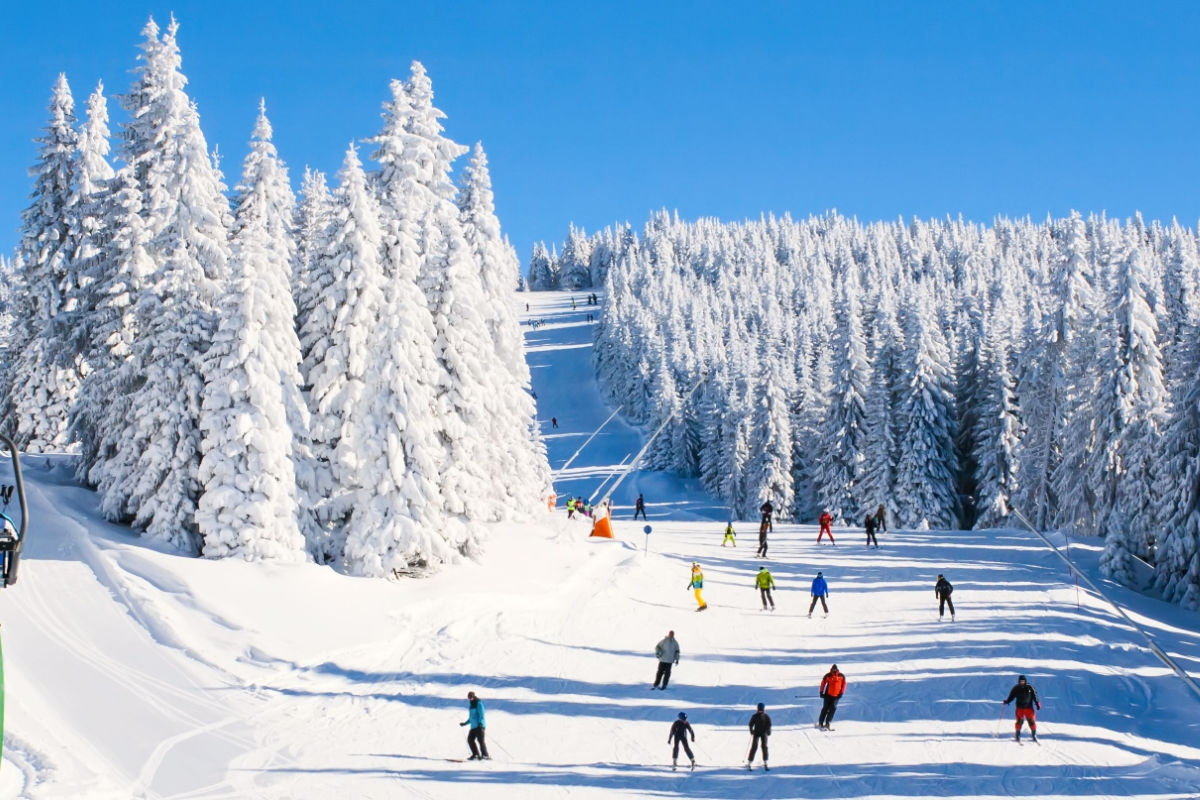
There’s been a lot of interest in how much snowfall ski resorts would have this season. After a monumental 2022-2023 snow sports season, few believed this year would rival last year. Rather than seeing a natural and expected dip in snowfall, we might face a real problem with ski resorts opening for the 2023-2024 season. And it seems we can blame El Niño.
What’s happening with ski resort openings?
Utah, which had one of its heaviest snowfall seasons last winter, is well off its pace this year. Alta Ski Area, one of Utah’s best ski resorts, has had 54.5 inches of snowfall this year. Last year, Alta reported 101 inches of snowfall by November 20.
Timberline Lodge at Mt. Hood in Oregon faces a similar problem. The historical average “snow depth” by late November is 29 inches. To date, in 2023, Timberline has a snow depth of ten inches. Timberline describes snow depth as “a measurement of settled, compressed snow, not total snowfall.” This is a unique way to describe base depth.
Alta claims its opening date is November 25. While the resort may be open by definition, we can look to other Utah resorts as cause for concern. Brian Head Resort, Park City, and Solitude Mountain Resort are open. Of these three Utah ski resorts, Brian Head Resort is the “most open” at four percent of its total skiable terrain – which is three of 71 trails – available for skiing and snowboarding.
Timberline claims its opening day will be November 24, though it’s difficult to see how the resort can continue to make that claim. Timberline Resort is well off its average snowfall, and on-site live cams suggest the mountain lacks the necessary base depth to open soon. Further, the forecast doesn’t suggest Timberline will see enough snow to open in the next few days.
As we reported before, and the chart below illustrates, this may be due to 2023-2024 being an “El Niño” year. A warmer, wetter winter is expected in the west, while the eastern United States is expected to be drier than usual. Those conditions do not mean good things for skiers and snowboarders. Timberline, for example, is at 40 percent of its average annual snowfall for the season, according to data from OpenSnow.

Ski resort opening issues
As ski resorts like Brian Head Resort show, a ski resort can “open” just one lift and one trail to check the box. This was the case recently when the Arapahoe Basin ski resort in Colorado opened. Eager skiers and snowboarders flocked to “A-Basin” and were met with excessively long lines at a crowded hill. This, coupled with poor conditions, made for a lackluster opening day.
Arapahoe Basin remains at two percent open.
Last season, Timberline Lodge opened early, closing back down the next day as it became clear the terrain wasn’t yet conducive to a pleasurable experience for guests. Heavy snowfall doesn’t always mean resorts are ready for business. The resort did easily meet its traditional opening day of the day after Thanksgiving.
Scanning across the ski resort landscape in the United States, we’ve not seen a resort more than 16 percent open. At best, the season is off to a slow start.
Should we be concerned about ski resort opening dates?
Yes and no.
First, ski resorts rarely open at total capacity on opening day. Timberline Lodge, a nearly year-round ski and snowboard resort, never simultaneously opens 100 percent of its lifts. Having a few lifts open on day one of a season is normal; as snowfall accumulates and conditions improve, more lifts and trails open. Those conditions typically improve rapidly. We’re not optimistic conditions will improve rapidly this year.
The concern is snowfall accumulation to date for 2023-2024. Resorts across the United States are well off the pace for a typical winter’s snowfall accumulation, much less approaching last year’s “snowmageddon” areas like Lake Tahoe experienced.
Resort representatives we spoke to all offered a similar platitude: anything can happen between now and opening day. And that’s true; resorts like Timberline and Alta could see several feet of surprise snowfall overnight and it could all settle into the resort’s base. And we hope that happens.
This optimism is quickly shattered when viewing forecasts. Timberline is not expected to see snowfall until November 29, and only up to two inches. November 30 could bring another 4-5 inches, while December 1 could bring less than an inch of snow, for a total of eight inches – all after opening day, and likely not enough to contribute to a respectable base depth that will result in the resort opening.
Timberline reports its current base depth is ten inches. The historical base depth for Timberline in November is 18 inches. This is a similar narrative for ski resorts nationwide. I’m using my home resort as an example here, but it’s not an outlier. Ski resorts everywhere should brace for a brutal business season.
Mt. Bachelor, another Oregon ski resort located near the town of Bend, emailed people on Wednesday noting conditions would result in its opening day being pushed back, adding, “There isn’t a new target opening date set at this time.” Mt. Bachelor also said its base depth was “around eight inches today,” and suggested temperatures were to high to produce man-made snow. The email also said Mt. Bachelor would “open as soon as Mother Nature allows.”
Opening day for many resorts is now, or near, at least on paper. Snowfall, base depth, and forecasts all suggest the season will start late for many resorts that haven’t opened yet. Resorts that are open should expect to see the expanded resort footprint open slower than anticipated, and these resorts should be prepared to close temporarily if necessary.
If you’re eager to ski or snowboard, it’s time to worry. Anything can happen, but El Niño is happening.



